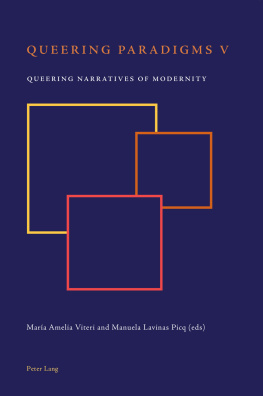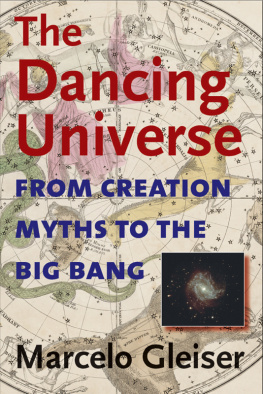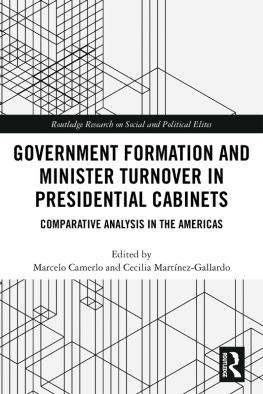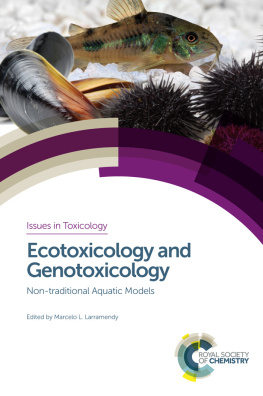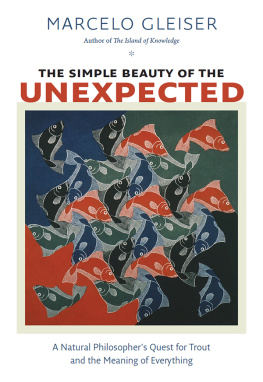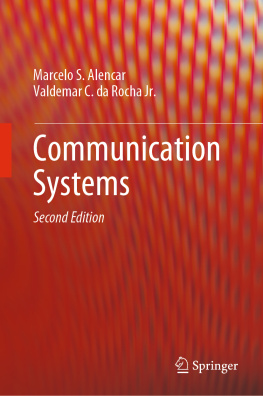Larramendy Marcelo L - Ecotoxicology and Genotoxicology
Here you can read online Larramendy Marcelo L - Ecotoxicology and Genotoxicology full text of the book (entire story) in english for free. Download pdf and epub, get meaning, cover and reviews about this ebook. City: Cambridge, year: 2017, publisher: Royal Society of Chemistry, genre: Romance novel. Description of the work, (preface) as well as reviews are available. Best literature library LitArk.com created for fans of good reading and offers a wide selection of genres:
Romance novel
Science fiction
Adventure
Detective
Science
History
Home and family
Prose
Art
Politics
Computer
Non-fiction
Religion
Business
Children
Humor
Choose a favorite category and find really read worthwhile books. Enjoy immersion in the world of imagination, feel the emotions of the characters or learn something new for yourself, make an fascinating discovery.

- Book:Ecotoxicology and Genotoxicology
- Author:
- Publisher:Royal Society of Chemistry
- Genre:
- Year:2017
- City:Cambridge
- Rating:3 / 5
- Favourites:Add to favourites
- Your mark:
- 60
- 1
- 2
- 3
- 4
- 5
Ecotoxicology and Genotoxicology: summary, description and annotation
We offer to read an annotation, description, summary or preface (depends on what the author of the book "Ecotoxicology and Genotoxicology" wrote himself). If you haven't found the necessary information about the book — write in the comments, we will try to find it.
Ecotoxicology and Genotoxicology — read online for free the complete book (whole text) full work
Below is the text of the book, divided by pages. System saving the place of the last page read, allows you to conveniently read the book "Ecotoxicology and Genotoxicology" online for free, without having to search again every time where you left off. Put a bookmark, and you can go to the page where you finished reading at any time.
Font size:
Interval:
Bookmark:
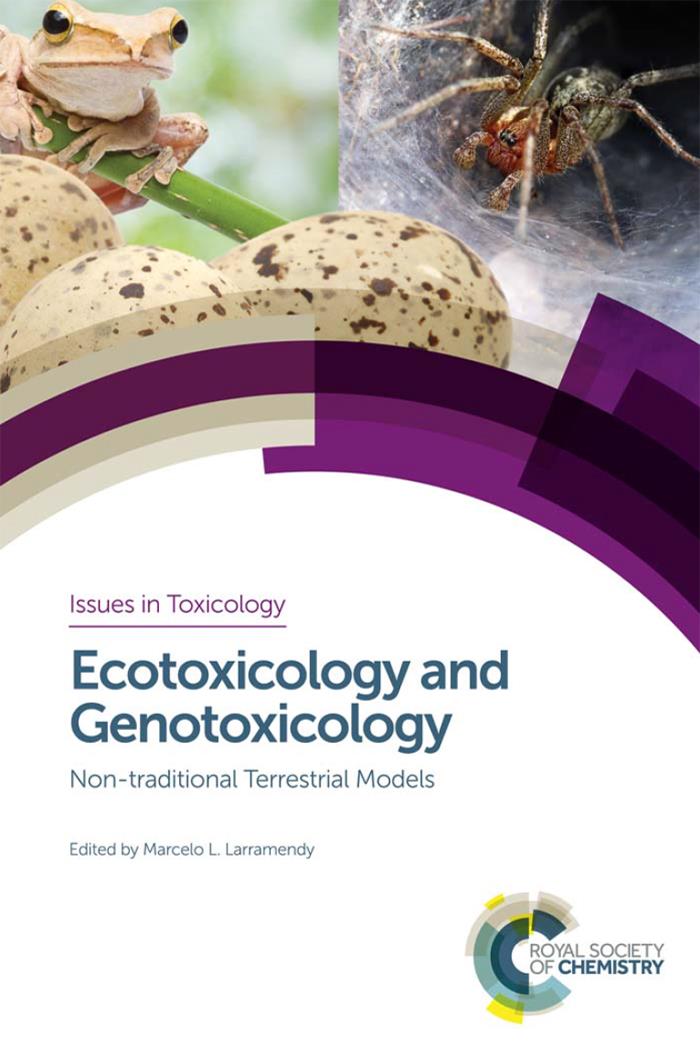
Ecotoxicology and Genotoxicology
Non-traditional Terrestrial Models
Issues in Toxicology
Series Editors:
Diana Anderson, University of Bradford, UK
Michael D. Waters, Michael Waters Consulting, USA
Timothy C. Marrs, Edentox Associates, UK
Editorial Advisor:
Alok Dhawan, CSIR-Indian Institute of Toxicology Research, Lucknow, India
Titles in the Series:
1: Hair in Toxicology: An Important Bio-Monitor
2: Male-mediated Developmental Toxicity
3: Cytochrome P450: Role in the Metabolism and Toxicity of Drugs and other Xenobiotics
4: Bile Acids: Toxicology and Bioactivity
5: The Comet Assay in Toxicology
6: Silver in Healthcare
7: In Silico Toxicology: Principles and Applications
8: Environmental Cardiology
9: Biomarkers and Human Biomonitoring, Volume 1: Ongoing Programs and Exposures
10: Biomarkers and Human Biomonitoring, Volume 2: Selected Biomarkers of Current Interest
11: Hormone-Disruptive Chemical Contaminants in Food
12: Mammalian Toxicology of Insecticides
13: The Cellular Response to the Genotoxic Insult: The Question of Threshold for Genotoxic Carcinogens
14: Toxicological Effects of Veterinary Medicinal Products in Humans: Volume 1
15: Toxicological Effects of Veterinary Medicinal Products in Humans: Volume 2
16: Aging and Vulnerability to Environmental Chemicals: Age-related Disorders and their Origins in Environmental Exposures
17: Chemical Toxicity Prediction: Category Formation and Read-Across
18: The Carcinogenicity of Metals: Human Risk Through Occupational and Environmental Exposure
19: Reducing, Refining and Replacing the Use of Animals in Toxicity Testing
20: Advances in Dermatological Sciences
21: Metabolic Profiling: Disease and Xenobiotics
22: Manganese in Health and Disease
23: Toxicology, Survival and Health Hazards of Combustion Products
24: Masked Mycotoxins in Food: Formation, Occurrence and Toxicological Relevance
25: Aerobiology: The Toxicology of Airborne Pathogens and Toxins
26: Chemical Warfare Toxicology, Volume 1: Fundamental Aspects
27: Chemical Warfare Toxicology, Volume 2: Management of Poisoning
28: Toxicogenomics in Predictive Carcinogenicity
29: Human Stem Cell Toxicology
30: The Comet Assay in Toxicology, 2nd edition
31: Computational Systems Pharmacology and Toxicology
32: Ecotoxicology and Genotoxicology: Non-traditional Terrestrial Models
How to obtain future titles on publication:
A standing order plan is available for this series. A standing order will bring delivery of each new volume immediately on publication.
For further information please contact:
Book Sales Department, Royal Society of Chemistry, Thomas Graham House, Science Park, Milton Road, Cambridge, CB4 0WF, UK
Telephone: +44 (0)1223 420066, Fax: +44 (0)1223 420247
Email:
Visit our website at www.rsc.org/books
Ecotoxicology and Genotoxicology
Non-traditional Terrestrial Models
Edited by
Marcelo L. Larramendy
National University of La Plata, Argentina
Email:

Issues in Toxicology No. 32
Print ISBN: 978-1-78262-811-8
PDF eISBN: 978-1-78801-057-3
EPUB eISBN: 978-1-78801-174-7
ISSN: 1757-7179
A catalogue record for this book is available from the British Library
The Royal Society of Chemistry 2017
All rights reserved
Apart from fair dealing for the purposes of research for non-commercial purposes or for private study, criticism or review, as permitted under the Copyright, Designs and Patents Act 1988 and the Copyright and Related Rights Regulations 2003, this publication may not be reproduced, stored or transmitted, in any form or by any means, without the prior permission in writing of The Royal Society of Chemistry or the copyright owner, or in the case of reproduction in accordance with the terms of licences issued by the Copyright Licensing Agency in the UK, or in accordance with the terms of the licences issued by the appropriate Reproduction Rights Organization outside the UK. Enquiries concerning reproduction outside the terms stated here should be sent to The Royal Society of Chemistry at the address printed on this page.
Whilst this material has been produced with all due care, The Royal Society of Chemistry cannot be held responsible or liable for its accuracy and completeness, nor for any consequences arising from any errors or the use of the information contained in this publication. The publication of advertisements does not constitute any endorsement by The Royal Society of Chemistry or Authors of any products advertised. The views and opinions advanced by contributors do not necessarily reflect those of The Royal Society of Chemistry which shall not be liable for any resulting loss or damage arising as a result of reliance upon this material.
The Royal Society of Chemistry is a charity, registered in England and Wales, Number 207890, and a company incorporated in England by Royal Charter (Registered No. RC000524), registered office: Burlington House, Piccadilly, London W1J 0BA, UK, Telephone: +44 (0) 207 4378 6556.
For further information see our web site at www.rsc.org
Printed in the United Kingdom by CPI Group (UK) Ltd, Croydon, CR0 4YY, UK
Preface
Many important ecosystems around the world are being constantly challenged owing to the growing human and industrial pressure exerted upon them. The use of various biomarkers in local, easily available species can be applied to evaluate the response of the biota to such pollutants. Several biological parameters mirror the interactions between toxic agents and biotic matrices. These are powerful tools that can be applied to environmental monitoring tests and studies. Their responses may reveal general deleterious effects to the organism, pinpointing alterations at a cellular, biochemical and molecular level, as well as higher levels of organisation.
Our global society needs to table down actions and set rules to evaluate and considerably reduce the real and potentially hazardous factors in the environment that can, as previously stated, result in health risks for all forms of life (including Homo sapiens sapiens). Despite major positive contributions in the field of health, owing to the immense progress achieved in science, technology and industrialization, the interaction between environmental risk and health is an often intricate equation, not self-evident, that involves a variety of not only social, political and economic, but also lifestyle factors. This cannot be emphasized enough. Health depends on the good quality of environmental basic ingredients, such as air, water, soil and food, among others. We believe that the ultimate challenge in this matter is to weigh-in short-term positive gains, while, at the same time, taking into account long-term effects of substances used. Available information about the toxic effects of heterogeneous xenobiotics, continuously released into human habitats, inadvertently, deliberately, or by non-regulated industrial discharges on biological components of the environment, is inconclusive.
There is not a clear-cut definition of the concept of Environmental Health. Various openings help us in the understanding of this concept. According to the World Health Organization, it is defined by all the physical, chemical and biological factors external to a person and all the related factors impacting upon behaviours. It encompasses the assessment and control of those environmental factors that can potentially affect health. It is targeted towards preventing disease and creating health-supportive environments For the National Environmental Health Association, this concept refers to the protection against environmental factors that may adversely impact human health or the ecological balances essential to long-term human health and environmental quality, whether in the natural or man-made environment. A third definition by the National Institute of Environmental Health Science also involves the criteria that the social environment encompasses lifestyle factors like diet and exercise, socioeconomic status, and other societal influences that may affect health.
Font size:
Interval:
Bookmark:
Similar books «Ecotoxicology and Genotoxicology»
Look at similar books to Ecotoxicology and Genotoxicology. We have selected literature similar in name and meaning in the hope of providing readers with more options to find new, interesting, not yet read works.
Discussion, reviews of the book Ecotoxicology and Genotoxicology and just readers' own opinions. Leave your comments, write what you think about the work, its meaning or the main characters. Specify what exactly you liked and what you didn't like, and why you think so.

